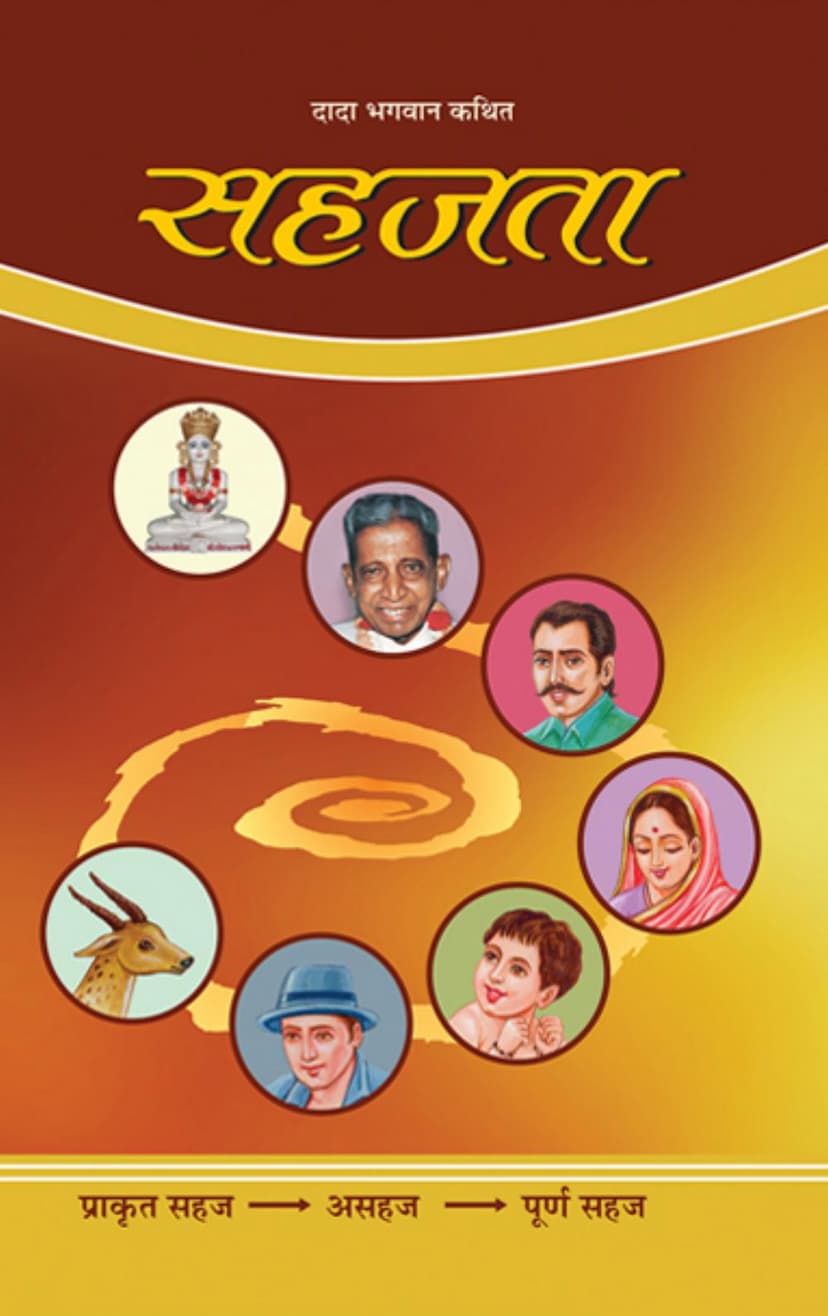Sahajta Hindi
Added to library: September 2, 2025

Summary
Here is a comprehensive summary of the Jain text "Sahajta" by Dada Bhagwan, based on the provided pages:
Book Title: Sahajta (सहजता) Author: Dada Bhagwan (दादा भगवान) Publisher: Dada Bhagwan Aradhana Trust
Core Theme: The Nature and Attainment of 'Sahajta' (Naturalness/Effortlessness)
The book, "Sahajta," compiled from the divine discourses of Dada Bhagwan, expounds on the concept of "sahajta" – a state of naturalness, effortlessness, and inner harmony. It is presented as a guide for those who have attained Self-knowledge through the Akram (without-steps) path, leading them towards higher stages of spiritual realization.
Key Concepts and Teachings:
-
Understanding 'Sahajta':
- Effortless vs. Effortful: True sahajta is not about trying to be natural; it's a state that arises spontaneously. The book contrasts this with 'agy sahaj' (ignorance-based naturalness, seen in animals and young children) and 'pragy sahaj' (wisdom-based naturalness, attained through spiritual knowledge).
- Natural State of the Soul: The soul (Atma) is inherently pure and naturally serene. The un-naturalness (asahajta) arises due to ignorance and the involvement of the ego (ahamkar).
- Ego as the Culprit of Un-naturalness: The ego, fueled by ignorance, creates likes and dislikes (rag-dwesh), leading to interference in the natural workings of the self and the external world, causing un-naturalness.
- Nature's Naturalness: External nature (prakriti) is inherently natural. It's the ego's interference and misidentification with nature that creates un-naturalness.
-
The Akram Path and Self-Knowledge:
- Dada Bhagwan's Revelation: The book highlights Dada Bhagwan (Shri Ambalal Muljibhai Patel) as a Gnani Purush who, in 1958, attained complete Self-realization. Through his "Gnan Vidhi" (knowledge bestowing ceremony), he could impart Self-knowledge to others within hours, initiating them into the Akram path.
- Akram vs. Krumik: The Akram path is described as a direct, effortless shortcut (like a lift) to Self-realization, unlike the gradual, step-by-step (krumik) path of the past which involved arduous efforts to eradicate ego and desires.
- The 'I am Pure Soul' Belief: After Self-knowledge, the primary belief shifts from identifying with the body-mind complex ("I am Chandubhai") to the pure Self ("I am Pure Soul"). This shift is fundamental to attaining sahajta.
-
The Role of Dada Bhagwan's Teachings and Guidance:
- The Gnani's Grace: The teachings are presented as the grace of the Gnani, enabling the seeker to realize their true nature.
- The Five Agnas (Commands): Following the five Agnas, given by the Gnani, is crucial. These are practical guidelines that help prevent interference with nature and the self, gradually leading to naturalness. Adherence to these Agnas is considered a form of spiritual effort (purusharth).
- Observing Without Interfering: A key practice is to remain an observer (gyata-drushta) of one's thoughts, actions, and external circumstances without interfering or trying to change them. This non-interference allows nature to unfold naturally.
- Accepting 'Vyavasthit' (Ensuing Order): Understanding and accepting the divine, causal law of the universe ('Vyavasthit') is vital. Things unfold according to this cosmic order, and resisting it causes un-naturalness.
-
The Process of Becoming 'Sahaj':
- From Un-naturalness to Naturalness: The journey involves moving from the state of being governed by ego and the world's opinions (asahaj) to the state of pure Self-awareness (sahaj).
- Gradual Transformation: While Self-knowledge is instantaneous, the process of making the body-mind-speech complex natural takes time and consistent practice of the Agnas.
- The 'Observer's' Role: The practice of remaining a witness to one's own actions and the actions of others, without judgment or interference, is central to cultivating sahajta.
- Releasing Attachment and Possessiveness: Letting go of "potapanu" (mine-ness) and identifying with one's true Self leads to naturalness.
- The Power of 'Seeing': By observing the ego's interference and the world's interactions without internal reaction, one gradually becomes natural.
- Effortlessness is the Goal: The ultimate aim is an 'aprayatna dasha' (effortless state), where all actions flow naturally without the strain of trying to control or manage.
-
Practical Implications and Examples:
- Dealing with Emotions: Understanding that emotions and external reactions arise from the ego and the body-mind, and observing them without identifying, leads to naturalness.
- Interactions with Others: Seeing everyone as Pure Soul and interacting with them from that awareness naturally brings ease and harmony.
- The Role of the Gnani: The presence and example of the Gnani are instrumental in guiding the seeker towards sahajta. Observing their effortless behavior and receiving their grace helps accelerate the process.
- Examples of Sahajta: The text uses examples like the natural flow of digestion, the uninhibited actions of animals, and the serene demeanor of the Gnani to illustrate the concept.
Structure and Content:
The book is structured through questions and answers between the questioner and Dada Bhagwan, systematically explaining the nuances of sahajta. It covers various aspects, including:
- The nature of the Self and the non-Self.
- The mechanics of ego and its role in creating suffering.
- The scientific approach of Akram Vignan.
- The practical application of the teachings in daily life.
- The journey from ignorance to knowledge, and from un-naturalness to naturalness.
In essence, "Sahajta" by Dada Bhagwan is a profound spiritual text that demystifies the path to effortless living and inner peace. It emphasizes the direct realization of the Self and the subsequent integration of that realization into all aspects of life through the practice of the Gnani's teachings and the unwavering principle of observation without interference.